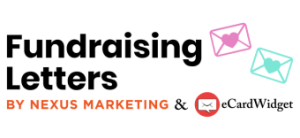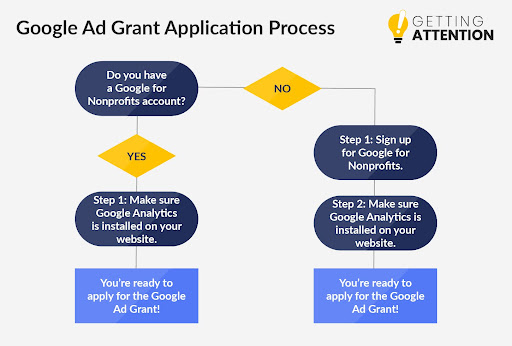What makes nonprofit marketing and outreach effective? Is it emotional appeals, demonstrations of your organization’s expertise, or personalized content that aligns with each donor’s interests?
The answer is all of the above, but one key element is missing: demonstrating impact. Funders, from individual donors to grantmakers to corporations, want to support nonprofit organizations they know are making a tangible difference. As such, your nonprofit needs to have strategies in place for proving and showing off your impact.
In this guide, we’ll explore three methods for connecting with your organization’s funders to demonstrate your nonprofit’s impact.
1. Create annual reports.
Annual reports are documents that compile a nonprofit organization’s activities, projects, and initiatives at the end of a year. These reports allow stakeholders, such as funders, to understand what your organization has accomplished throughout the year.
Essentially, annual reports are yearly opportunities to showcase your nonprofit’s impact. However, be aware that creating these documents can be a significant undertaking that requires having mature data collection practices, sophisticated graphic design skills, and an understanding of your audience’s interests, questions, and concerns.
To create your annual report, be sure to:
- Keep track of program information. Accurate reporting requires accurate data. Ensure all of your programs have reliable data collection strategies in place, such as using case management software to document data points and monitor program outputs. Your annual report is an opportunity to share this data and point toward long-term outcomes. For example, an environmental organization might report a program output of removing 100 lbs. of garbage from local rivers and the outcome of creating healthy ecosystems by reducing heavy metals, like arsenic, and other pollutants.
- Make data visualizations. Make your data accessible by including visualizations. Add graphics and infographics like pie charts, graphs, and comparison charts. Be sure to pair each data visual with an explanation interpreting the results. Additionally, consider adding the raw data to your annual report or making it available in a separate report for those curious.
- Create multiple versions. Annual reports can be long, and many nonprofits create several versions of their annual report for different audiences. For example, a nonprofit might create full-scale physical copies to mail to major donors, an abridged online version to be used in marketing, and a detailed technical report available for those who need a greater breakdown, like grantmakers.
Additionally, consider creating impact reports. In contrast to annual reports, impact reports are for specific programs and are usually geared toward that program’s funders. For example, if your organization receives a grant for a program, many grantmakers will require an impact report detailing the program’s outcomes and how their funding was used.
Let’s break down the elements of these documents:
- Executive summary
- Organizational or program goals
- Key activities
- Outcomes
- Testimonials or client stories
- Challenges and opportunities
- Finances
Ultimately, an impact report should explain what your nonprofit attempted to accomplish (program goals), what programs it launched or improved (key activities), and what the results of those programs were (outcomes). To provide evidence of the report results, nonprofits should also include examples and feedback from participants (testimonials). Nonprofits should also maintain transparency by reporting any issues that may have impacted results and how they overcame or plan to combat them in the future (challenges).
Additionally, in funder-centric reports, nonprofits should report how their funding was used (finances). Along with maintaining transparency and fulfilling grant requirements, providing reliable impact reports can help nonprofits secure support from that same funder again in the future.
2. Share impact stories.
Marketing statistics show that people remember stories 22 times more than facts alone. While facts and data are important, statistics alone may be hard to visualize, in contrast to stories that provide examples of what your work looks like in practice.
To demonstrate impact, pair your hard data with stories that showcase the difference your nonprofit makes in its beneficiaries’ lives. Create impact stories by:
- Conducting interviews. Reach out to beneficiaries who are willing to share their stories. Record these interviews to get their exact words and ask permission to use their name, words, and photo in your marketing materials and impact reports. For some types of nonprofits, such as health-related organizations, your interviewees may wish to share their stories anonymously.
- Considering your message. Before constructing your impact story, consider what message you want to get across to your audience. You might seek to build an emotional connection, present your cause as urgent, or frame your nonprofit’s services as transformative.
- Writing the story. Use the interviews you compiled to construct an impact story. When it comes to quoting beneficiaries and describing specific details, be truthful. While you can expand on some parts of a story to create a better reading experience, the facts of the story should be accurate to reality.
Create several impact stories that focus on different beneficiaries, aspects of your nonprofit, and tones. Then, choose which stories match your target funders. For example, in an impact report, you would primarily want to showcase feedback that focuses on your nonprofit’s programs rather than stories about your organization as a whole.
3. Provide tours.
Some funders may appreciate the opportunity to physically see the impact your nonprofit is making with their own eyes. As such, consider offering groups of funders tours of your nonprofit’s facilities and program sites.
To host a successful tour, consider these strategies:
- Offer virtual and in-person options. Some funders may have busy schedules and be unable to attend a tour. Make your tours flexible by arranging both virtual and in-person options based on the funders’ preferences.
- Host a Q&A. Be ready to answer questions throughout your tour and consider dedicating time after the tour concludes specifically to answer questions.
- Plan a post-tour lunch with your staff. After the tour concludes, host a lunch where members of your tour group mingle and talk directly with members of your nonprofit’s staff. Be sure to brief your staff on the tour guests ahead of time so they are prepared to discuss their work effectively with funders.
In some cases, specific funders may request private tours as part of their support. For example, a corporate sponsor might want to tour the venue for an event you’re hosting or a member of a foundation may tour program sites as part of the grant follow-up process.
Whether your nonprofit wants to increase donations from individuals, secure corporate support, or fulfill its grant obligations, demonstrating impact is essential. The first step to showcasing your impact is keeping careful records of what your programs are doing and analyzing that data to define long-term outcomes. Invest in the tools you need to track your data so you can successfully share your impact with funders.


